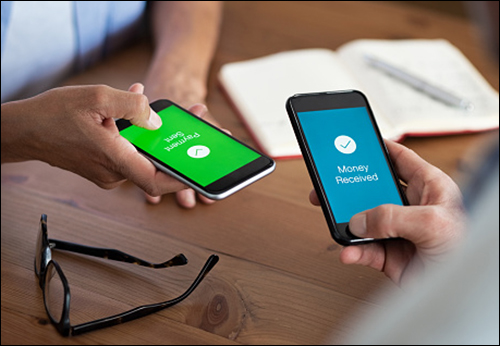The NFC Forum has released a new money-transfer specification candidate for Near Field Communication (NFC) technology. According to the industry organization, the new spec is intended to enable the kinds of contactless-payment solutions now being offered in China and Japan via QR codes.
The NFC Money Transfer Candidate Specification (NMT) will enable financial service providers to create NFC-based applications for money transfers that can be conducted by tapping an NFC-enabled mobile phone against a reader or another smartphone. The system offers an alternative to the QR code-based payment method that has grown in popularity in China, says Paula Hunter, an executive director at the NFC Forum. The association has been developing specifications to ensure interoperability between devices and among services since 2004.

While NFC payments through systems such as Apple Pay and Google Pay are common throughout North America and Europe, they have not received as much traction in China, in part because fewer Chinese consumers had NFC-enabled devices in hand as the technology was being adopted several years ago. Additionally, payment systems using NFC in Europe and North American typically employ a separate chip in a smartphone—the secure element (SE)—to relay authorization to an NFC reader before a transaction can be completed. Many of the phones currently in use in China lack the SE chip.
Payment service providers such as WePay and AliPay filled the gap in that part of Asia with QR code scanning-based apps. Consumers can use these contactless payments at convenience stores and other locations to make fast, low-value purchases. Users can download the payment app, provide payment information that can be loaded onto their phone, and subsequently hold the phone over a merchant’s point-of-sale (POS) terminal when purchasing products. The terminal’s camera scans a QR code on the phone, thereby authorizing the transaction. An alternative approach involves having the phone’s camera scan a QR code at the POS terminal in order to accomplish the sales transaction.
Recently, NFC Forum members that sell products in China have expressed an interest in a specification that could enable NFC payments as an alternative to QR codes in that nation. “This really came to us from some member companies that were looking at what was happening with China and Japan with people communicating with QR codes to make payments,” Hunter states, “and they thought ‘Why can’t we take advantage of NFC technology to transmit the same information, and more securely?'”
Unlike NFC payments conducted via Apple Pay or other wallet-based services, the system would not require an SE chip. Rather, it would simply capture an NFC Data Exchange Format (NDEF) record and collect a payment by subtracting that payment amount from a balance pre-authorized by the app. NFC technology provides multiple benefits over QR-based payment systems, Hunter notes. For one thing, she says, “It offers better security protection,” since the NFC transmission requires a very close range. That means it would be more difficult for anyone to intercept transmitted data.
The NFC transaction should be easier for users than QR code scans, Hunter says, adding, “A customer just taps their phone—they don’t have to worry about positioning a camera.” Ultimately, she predicts, that could help to reduce transaction times and bottlenecks at cash registers. The NFC functionality could also be employed as a peer-to-peer system, by which two individuals with smartphones or other NFC devices could exchange money by tapping their devices near each other. The app would prompt them to indicate the amount of payment, and the transaction would then be made automatically.
The NFC Forum’s Reference Application Framework group (RAF), a subgroup of the organization’s Technical Committee, has been working on the specification for several years, Hunter explains. The RAF anticipates that NFC Forum members will comment on the new spec throughout the next six months, she says, after which the organization plans to prepare it for release. According to Hunter, the new specification benefits from an exhaustive preparation process. “Once we’re through the [development] process,” she states, “it’s a pretty mature and robust document.” She expects that companies may already be testing out the spec with prototypes.
Hunter predicts that the NFC-based spec will be adopted by service providers and merchants in China that may be seeking a faster, more secure feature for contactless payments. No change to handsets will be required. “Certainly, what we wanted to do with the specification,” she says, “is to make it very easy for merchants and service providers to offer NFC applications for payments.” With the release of the specification, Hunter adds, “I would expect to see new implementations.” That will depend, in part, on whether or not companies currently have any concerns regarding fraud, or any problems involving the user experience based on the scanning of QR codes.
According to the NFC Forum, NFC-enabled mobile phones have become more ubiquitous in China in recent years, and throughout the rest of the Asia-Pacific region as well. At present, less than 50 percent of Chinese phones feature NFC functionality, though that number is rising, Hunter repots. For instance, approximately 78 percent of phones sold in Asia are expected to be NFC-enabled by 2022.


